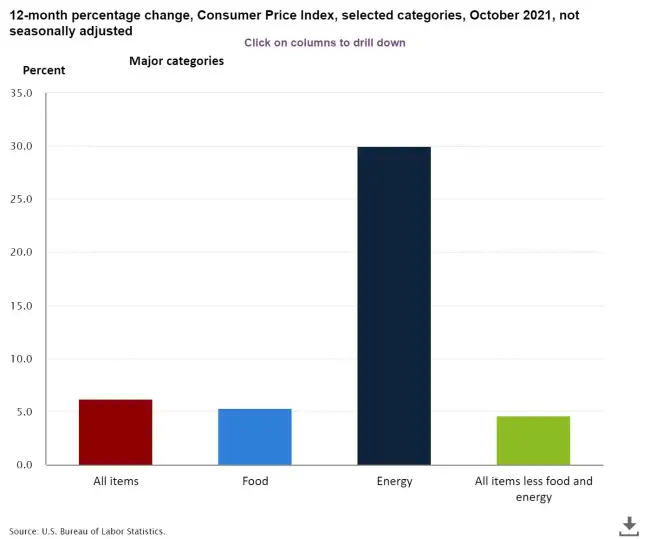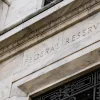Inflation Spike Puts Upward Pressure on Mortgage Rates

Consumer prices rose last month at the fastest pace since 1990 as the Covid-19 pandemic strained global supply chains, according to a government report released on Wednesday.
Prices rose 6.2% from a year ago, quickening from the 5.4% pace in September, the report said. The core inflation rate, minus volatile sectors like food and energy, rose 4.6%, faster than September's 4% rate.
Inflation puts upward pressure on mortgage rates because it prompts bond investors to seek bigger yields to keep higher prices from eating away at their returns, said Dan Roccato, a financial analyst with Credible.
A bond-buying program started by the Federal Reserve at the beginning of the pandemic has kept long-term rates low, including the financing costs for mortgages, but the central bank is starting to taper those purchases this month. Most U.S. home loans are packaged into bonds that are sold to investors.
“At some point, bond investors will start to insist they get paid more, relative to inflation,” said Roccato. “To date, bond investors have been pretty docile – they’ve held their powder as the Fed kept liquidity measures going – but as that comes to an end, their trigger finger is going to start getting itchy.”
Yields on the 10-year Treasury, a benchmark for U.S. mortgage rates, rose above 1.5% following the release of the inflation report.
The average U.S. rate for a 30-year fixed mortgage probably will increase to 4% in 2022 from 3.1% this year, the Mortgage Bankers Association said in an Oct. 17 forecast. In 2020, the average rate was 2.8%, an all-time low.
Inflation is being fueled by the global supply-chain bottlenecks caused by the pandemic, economists from Wells Fargo said in a report.
“The breadth of price hikes continues to widen well beyond the industries most affected by the pandemic,” the report said. “We expect inflation to push even higher over the next few months, before starting to subside around the second quarter of next year.”
Energy led October's gain, with a spike of 30% from a year ago, the government report said. Prices for used cars and trucks were up 26% from last year, as a global shortage of microchips impeded the production of new vehicles.

Bottlenecks are worsening as demand for consumer goods increases with the approach of the holidays, said Will Compernolle, a senior economist at FHN Financial.
“The bulk of October price increases came not from people shifting back to services as Delta waned, but rather supply bottlenecks interacting with a rush to stock up on holiday shopping,” he said. “Additionally, the lingering microchip shortage continues to put pressure on auto prices.”
Federal Reserve officials for months have urged the U.S. financial markets to look at the pandemic’s inflation spikes as being transitory. Fed Chairman Jerome Powell said at a press conference last week that the central bank defines “transitory” as being “non-permanent,” and did not mean to indicate that pandemic-induced inflation would be fleeting.
“We’ll see one more CPI report before the December FOMC meeting, but this report is the latest test for the Fed’s patience in explaining high inflation as transitory,” said Compernolle. “How long is too long to wait, and what new issues might emerge that keep inflation high?”
Kathleen Howley has more than 20 years of experience reporting on the housing and mortgage markets for Bloomberg, Forbes and HousingWire. She earned the Gerald Loeb Award for Distinguished Business and Financial Journalism in 2008 for coverage of the financial crisis, plus awards from the New York Press Club and National Association of Real Estate Editors. She holds a degree in journalism from the University of Massachusetts, Amherst.




